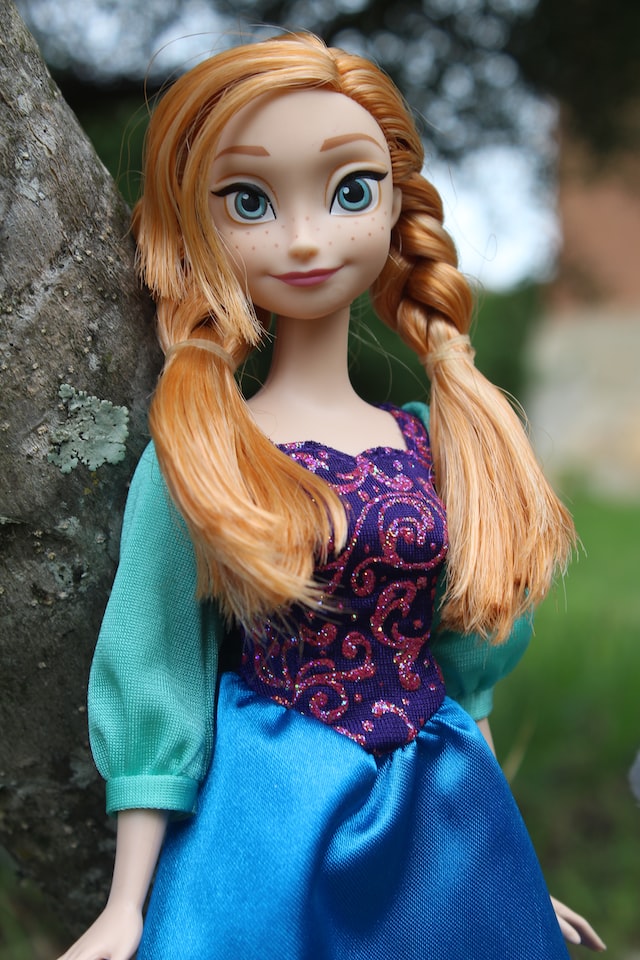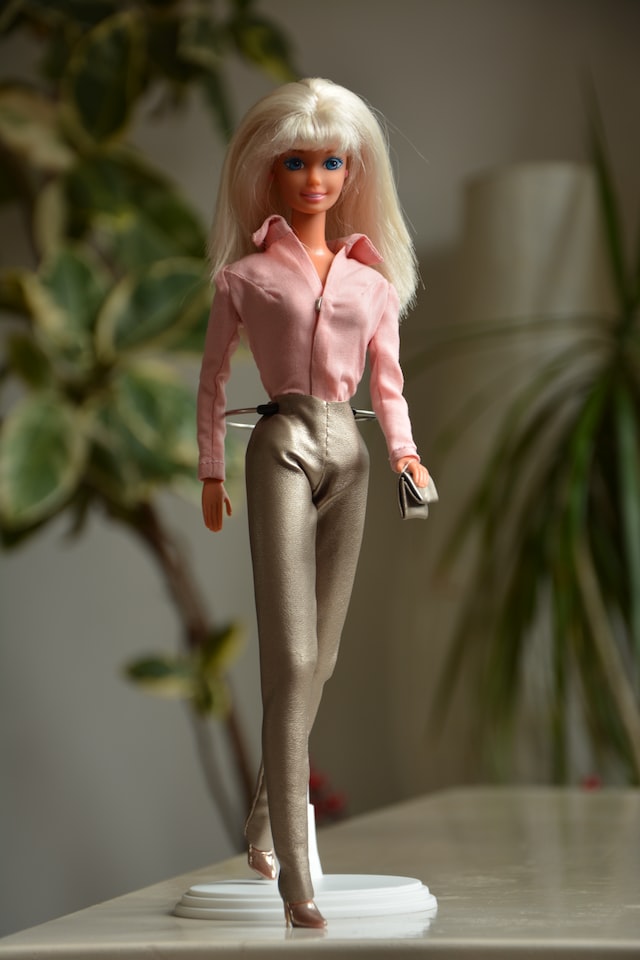Ruth Mosko Handler, creator of the world's longest-selling toy, Barbie, and later Mattel Toys, was one of America's most successful female entrepreneurs.

On 28 April 2002, Ruth Handler, the creator of Barbie, died at the age of 85 after a long illness.
The birth of Barbie
Ruth Handler was born in 1916 in Denver, the capital of the US state of Colorado. Her parents were originally from Poland and, like countless other immigrants who came to America in search of their dreams, they travelled across the ocean on a hot and dirty steamer to escape military service.
Ruth's father was a blacksmith, living on a meagre income to support Ruth and her nine sisters, and her mother worked all day for the family, but the hardships of life did not seem to take too much of a toll on the large family, and her father and mother never lost their temper with the children. Ruth Handler later recalled that, as the youngest child, she never grew up without pampering. And it was because she grew up with so much love that she was able to have the childlike spirit of a child and design the lovely 'Barbie'.
At the age of 19, Ruth was just a sophomore in college, small but curious, and her curiosity about film led her to Hollywood, but she came to this seductive place not to become a movie star, but to study industrial design, and luckily she found a job on the set of the famous Paramount Corporation. It was here that she met the love of her life, Elliot Handler, and they soon fell in love and married shortly afterwards. In 1942, the ambitious Handler's started their company in a garage, initially producing wooden picture frames, with Elliot developing the samples and Ruth selling them.

By chance, the Handlers tried their hand at making small pieces of furniture from leftover frames and found that they sold well, so the company added another business, designing and making furniture for children's playrooms. After a few years, the company began to make money and its main business shifted to the production of toys, and in 1945 the Handlers and their friend Mantzen opened a company that would become the most famous and successful in the production of rag dolls. The company took the name Mattel, MATT after Manteson, and EL after Elliott.
At the time, Ruth already had a daughter, and as a mother and a toymaker, she took her children's ideas very seriously. One day, out of the blue, she saw her daughter Barbara playing with a little boy with cut-out dolls that were not the usual baby babies of the time, but teenagers with their own professions and identities, much to her daughter's fascination. "Why not make a more grown-up toy doll?" Inspiration burst into Ruth's head.

Despite the inspiration, the journey to realisation was arduous. Before Barbie was born, most of the toys on the American market for little girls were cute little angels, round and chubby, similar to the screen image of the famous child actress, Shirley Temple, which was how adults imagined toys for children, but from the interest of older children, such toys were slightly "childish", they needed a playmate of their own age. They need a playmate of their own age, not a little baby.
What should they make their dolls look like? Ruth struggled to work out what to do with her doll, and at the right time she needed to go to Europe on business, so Ruth went to Germany where she saw a beautiful doll called 'Lilly', first made in 1955 and based on a famous cartoon in the West German Times Bilder. Lili is made of hard plastic and stands between 18 and 30 cm tall. Her long hair is tied in a ponytail and trailed behind her head, and she wears a gorgeous dress. Her body is impeccable, she has all the physical features and is dressed in a very "revealing" way.
So Ruth bought three Lili's and brought them back to America, telling her male colleagues at work that she wanted to design a "sophisticated" toy, but they thought the Lili's They thought the "Lillys" were too revealing and were the product of men's fantasies and not suitable for children.
Ruth wasn't discouraged, she thought, why can't I combine the two, children need a grown up but not a revealing doll. A little girl doesn't just need a doll her own age, she needs an ideal image of what she will look like when she grows up. So, the "Barbie" look was maturing in Ruth's mind. And with the help of the company's technicians and engineers, Barbie was born!

With the care of a woman, Ruth then hired costume designer Charlotte Johnson to design Barbie's clothes and in 1958 they were awarded the patent to produce Barbie. This doll would change an era; she was unlike any doll that had ever been made. She was an adult, slender and fresh in limbs, well-built but tightly wrapped in beautiful clothes, and with a face as mysterious as Marilyn Monroe's, although only 11.5 inches tall. Finally, Ruth gave this lovely doll the nickname "Barbie" for her daughter Barbara.

Growing up
The Barbie doll was invented by Ruth Handler and debuted at the 1959 American Toy Fair under the title 'Barbie - A Role Model for Young Girls'. But, to Ruth's surprise, Barbie was not sold out, but was met with a lukewarm reception by toy dealers. After all, she was a new thing, a risk, and the dealers were reluctant to do so, only reluctantly stocking a few.
But the market proved Ruth's judgement right, and the 'Barbie' in the corner of the dealers' shelves was a huge hit with children, and more and more people began to buy the delightful new toy, especially little girls, who were so keen that 350,000 were sold in the first year.
In 1960, distributors had a complete change of heart and orders flew in like snow to Mattel. It took several years for the company to satisfy the demand for Barbie, and in 10 years the public spent $500 million on Barbie. But while Barbie was widely welcomed by the public, it was also criticised from all quarters. Women's organisations in the United States first said that Barbie was too 'sexy', too 'perfect' and set unattainable goals for young girls, with the end result being that it hurt their self-esteem and made them feel inferior about their looks and body, and that she was therefore Rather than being a symbol of women's liberation, she acts as a "persecutor of women". Ruth does not think so. Barbie is a girl's idol, and idols are naturally perfect, and little girls do not feel inferior because of their idols. To prove that Barbie is not an empty-headed vase, but a working woman. Ruth has designed more kinds of Barbie, she has taken on more identities, she can be a doctor, an astronaut, a businesswoman, a police officer, an athlete, she has even volunteered for UNICEF, so far she has more than 80 professions; she can be Chinese, Indian, black, she represents 45 nationalities; her pets are now She has over 45 different kinds of pets, her first being a horse called "Dancer"; she has her boyfriend "Ken", named after Ruth's son; and she has three sisters of her own, namely She also has her three sisters, Chubby, launched in 1964, Stacy, launched in 1992, and Little Kelly, unveiled in 1995.
It's an ordinary toy, but so real that on the one hand she is incredibly beautiful, the 'girl with a thousand faces', and on the other hand so close to us because she has her own preferences, just like any little girl. Opposition will still be voiced, but as a marketing image, Barbie is so successful. According to Mattel, an 11 year old American girl may own more than 10 Barbie dolls, while a French girl of the same age owns five. As well as young children, millions more adult women buy Barbie, "For them, no matter what age, she's not just a doll," says Ruth, "she's become part of them." And Barbie collectors are even more gender-neutral: a Barbie doll that cost $3 in 1959 might be worth $5,000 today if it were in good condition.
A cultural icon
From the day the first Barbie was created, it has been constantly improved and innovated. Barbie's appearance has been revised and improved over some 500 times to become what it is today. The most recent appearance is based on the famous American athlete of Chinese descent, Michelle Kwan. In order to provide Barbie with beautiful fashions, more than one billion pieces of clothing have been produced since 1995, with around one hundred new Barbie outfits released each year. Barbie is now sold in 150 countries around the world, with over one billion units sold. The American girl, a cross between a little girl and a grown-up woman, is the longest-selling toy on the world toy market and has become a favourite of men, women and children around the world.
Now, at 49 years old, Barbie is still young and she has lived longer than the once-popular Cabbage Patch dolls and teddy bears. No one knows why this is, even her creator, Ruth Handler, cannot explain it. Longevity is a mysterious and elusive thing, both in the toy world and in real life. Someone once asked Ruth Handler: Why does Barbie do so well? She simply smiled and replied, "I'm a marketing genius." But Mattel produced many other types of toys, and not only did none of them do better than Barbie, but many did die young. It should be said that Ruth's initial inspiration gave the doll a permanent life, and she was the "mother of Barbie" who came to life and really created "Barbie" for children.
Barbie has gone far beyond the definition of a toy to become an immortal cultural icon. She caught the eye of the pop guru Andy Warhol, who was no less devoted to Barbie than he was to Marilyn Monroe; for a period in the late 1990s, Barbie lived almost daily on America's radios, although the chanting of "She was a symbol of 20th century life, a symbol of American womanhood, a modern-day Mona Lisa, and even the Academy, with its seriousness, had to stoop to the study of the "Barbie phenomenon". Students in sociology classes are asked to complete the following assignment: What criticisms have been levelled at Barbie for being a role model? Do you think manufacturers should take these criticisms into account? Although there may never be a 'right' answer to these questions.
Whatever the debate and praise, one thing is certain: Barbie is the first living woman born into the doll design industry, and no longer a passive child. "Barbie's adult design opened up the horizons of young girls who could perceive the world beyond the nursery and experience the adult life with Barbie They can experience all aspects of adult life with Barbie. From beachgirls to politicians, Barbie's ever-changing persona fuels the imagination of children who want to be just like Barbie when they grow up.

Barbie's success brought a great deal of wealth to Mattel, which by 1966, when Ruth was 50, had dominated the highly competitive toy world, controlling 12 per cent of the $2 billion US toy market. Ruth said, "By then I already had my business, my husband, my kids and Barbie and Ken. I was on top of the world."
But life didn't go smoothly for Ruth thereafter; in 1970, she was diagnosed with breast cancer and underwent a mastectomy. In 1975, Ruth resigned as president and left the company she and her husband had founded.